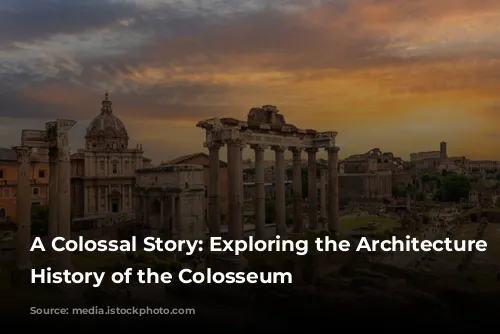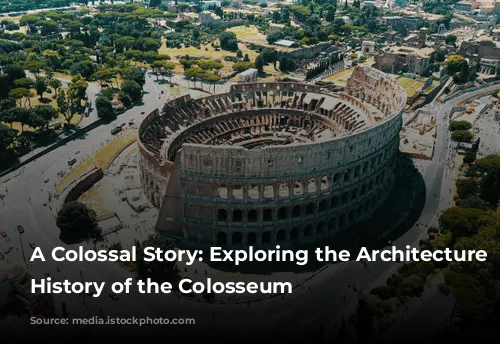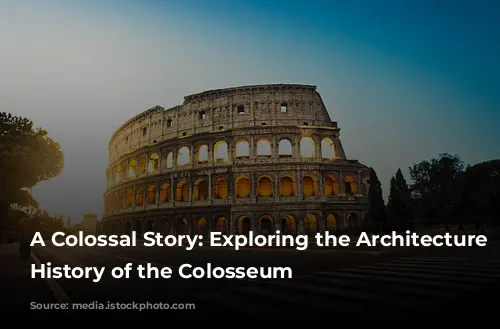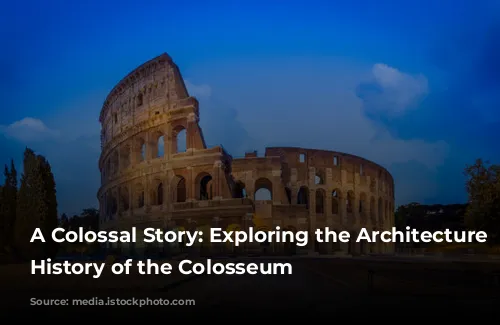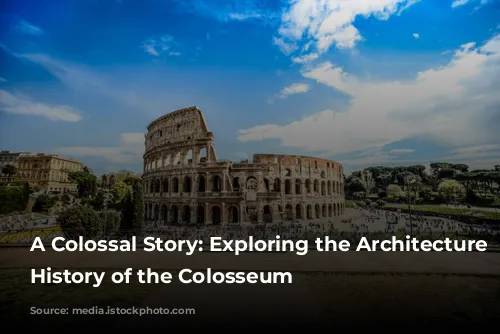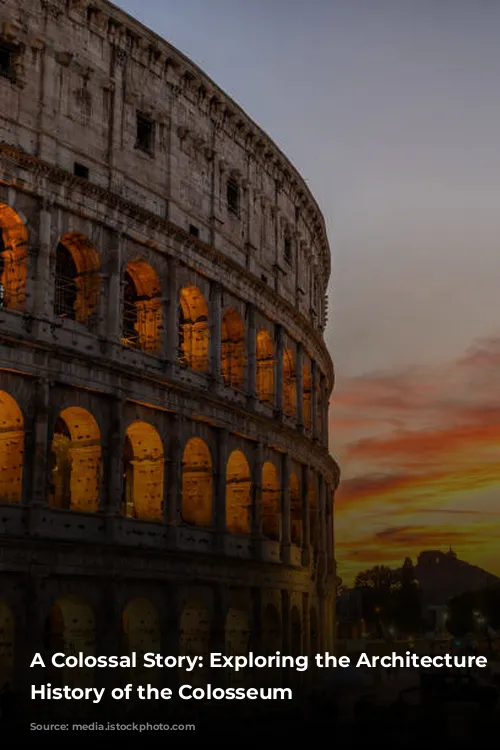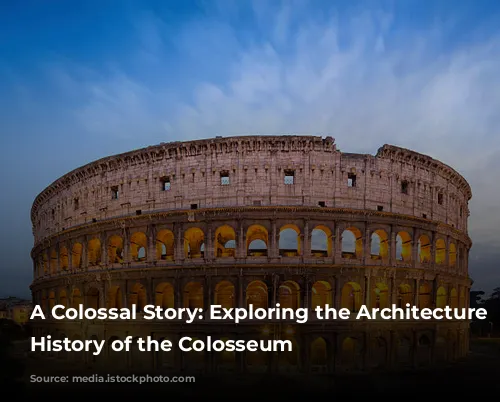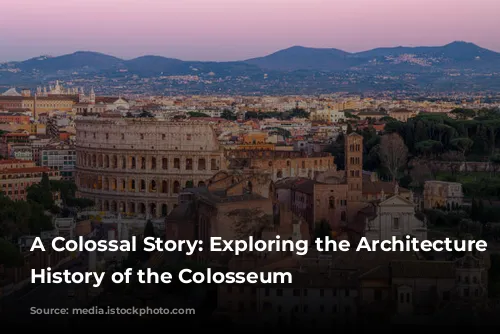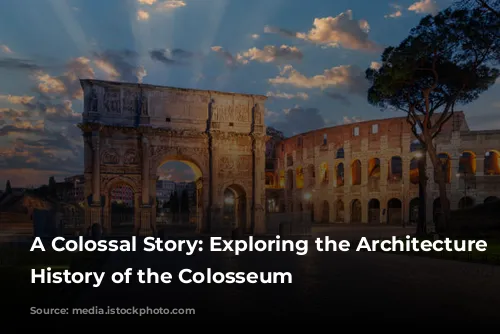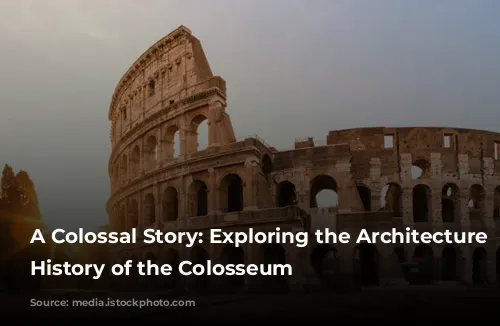The Colosseum stands as a monumental symbol of Roman power and engineering prowess. Built in the heart of Rome, this imposing structure represents more than just a stadium; it embodies a complex interplay of architectural innovation, societal hierarchy, and entertainment spectacle.
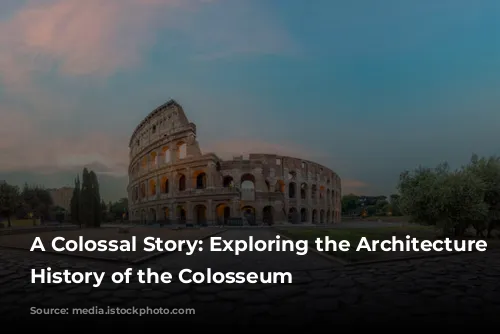
A Giant Leap in Architecture
Before the Colosseum, temporary wooden amphitheatres were the norm, used for short-lived events. But the Romans sought permanence and grandeur, resulting in the construction of the Colosseum, the second and largest permanent amphitheatre in Rome. While the Circus Maximus may have dwarfed it in size, the Colosseum became a centerpiece for blood sports, hosting animal hunts, prisoner executions, and the thrilling gladiatorial combat that captivated the Roman public.
The elliptical architecture of the Colosseum was a marvel of its time. It enabled spectators to enjoy clear views of the arena from every seat. This innovative design showcased the Romans’ expertise in engineering and architecture, paving the way for future arenas.
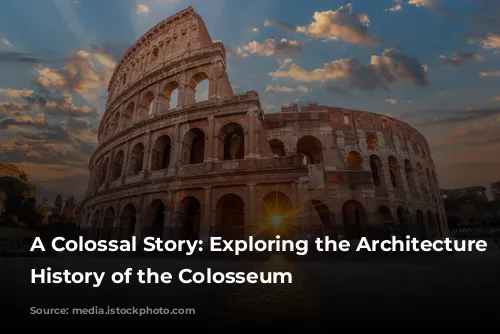
A Facade of Power
The Colosseum’s exterior is a breathtaking display of Roman design. Four levels adorned with 80 arches each create a visual spectacle that blends practicality and aesthetics. The arches not only support the massive structure but also lighten the visual weight, preventing the building from appearing overwhelming. They also serve as triumphal arches, symbolizing Rome’s victories and the wealth obtained from conquests like Judea, from which materials for the Colosseum were sourced.
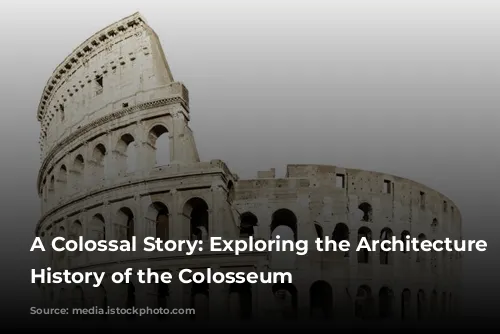
Seating for the Masses
The Colosseum’s interior is as impressive as its exterior. The four visible levels housed thousands of spectators, with estimates ranging from 50,000 to 87,000. The Romans segregated their citizens based on social status within the arena, with the elite enjoying prime seating close to the action, while ordinary citizens were placed higher up. This carefully orchestrated seating arrangement ensured social hierarchy was maintained, reflecting the strict social order of Roman society. The vaulting within the arena was crucial for both structural integrity and spectator access. The complex network of corridors and seating areas was designed to direct spectators to their designated areas, preventing mingling between different social classes. This meticulously planned system further emphasized the importance of hierarchy in Roman society.
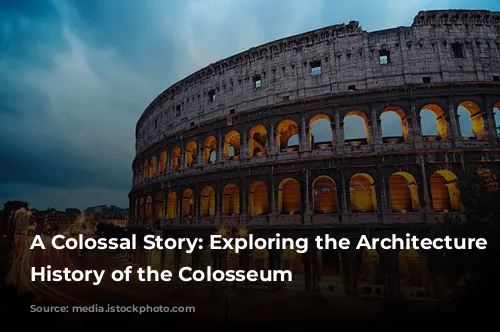
Engineering Marvels
The Colosseum’s architecture was not only impressive in its scale but also in its innovative engineering features. One such feature was the “vela,” a massive canvas awning that protected spectators from the sun’s heat during the games. These enormous awnings required the strength of a thousand sailors to control, highlighting the Roman navy’s expertise in handling large-scale structures. But the Colosseum’s engineering brilliance extended beneath the surface. The arena, aptly named for the sand that covered its wooden surface, housed a complex network of substructures known as the hypogeum.
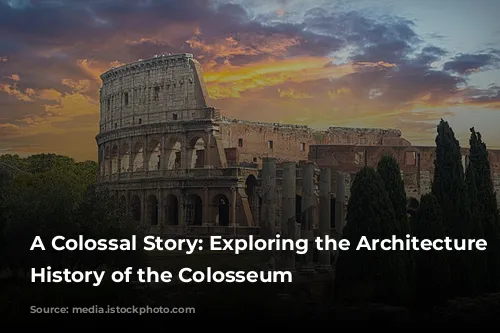
Secrets Beneath the Arena
The hypogeum was a maze of chambers and tunnels used for a variety of purposes, including storing scenery and props. It also contained a series of lift systems and trapdoors, allowing for dramatic entrances for gladiators and animals into the arena, creating a spectacle that captivated the audience.
While scholars believe the original hypogeum was simpler, Roman historian Cassius Dio suggests that the Emperor Titus flooded the arena at some point. This evidence points towards a later expansion of the hypogeum, possibly by Emperor Domitian, creating the elaborate network of chambers and tunnels we see today.
The Colosseum stands as a testament to Roman ingenuity and power. Its architectural brilliance, its sophisticated seating arrangement, and its intricate hypogeum provide a fascinating glimpse into the lives of the Roman people and the spectacles that captivated them. More than just a stadium, the Colosseum is a monument to Roman civilization and a symbol of their enduring legacy.
